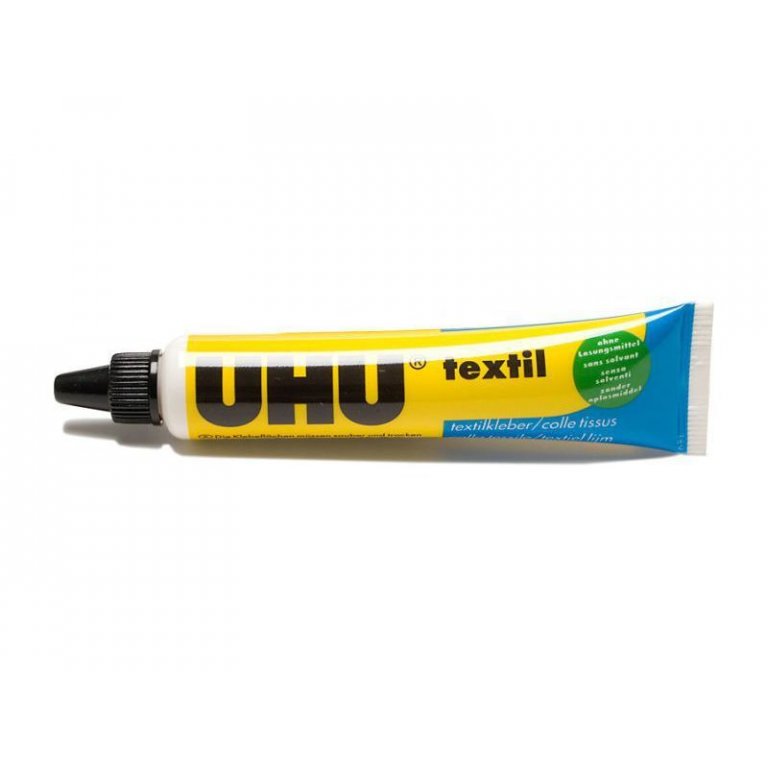
| Location in Store | EGI23B |
|---|---|
| Article No. | 0253701 |
polymerization adhesive, transparent when cured, waterproof
Attributes/Applications: UHU textile glue is a special adhesive for gluing cotton, jean material, linen, felt, coconut fibre and cotton-blended fabrics to themselves or to wood or leather. It is very good for making seams on fabrics, patching holes on your favourite clothes or on decoration and upholstery fabrics. UHU textile glue should not, however, be used on silk or fabrics that contain 60% or more synthetic materials.
It is a milky paste-like glue that becomes transparent as it cures. In addition, it has good resistance to aging and light and can be thermically cross-linked – this means that its inner strength, and thereby its ability to withstand washing and cleaning agents, can be improved through the process of ironing (UHU recommends from three to five minutes at 130 to 150 °C).
Fabrics glued with this UHU product can be washed at temperatures up to 90°; it is also resistant to chemical cleaning agents (perchlorethylene basis).
Treatment: In the case of thin fabrics, a preliminary test should be made to see if the glue permeates the material. As with all gluing work, the surfaces to be glued must be clean, dry and free of grease and dust. The glue can be applied to one or both surfaces with a brush or a spatula-like tool (not too thick because more is not better). The pieces to be glued can be pressed together immediately or after a maximum airing time of five minutes. After about 30 minutes, you can begin with the ironing step (as reported, this improves the inner strength and the bond). The final adhesive strength is not achieved before a number of hours (overnight). This latter fact should be kept in mind when the glued surfaces will have to withstand a lot of strain. Excess glue that is still fresh can be removed with water; when cured, however, it is either extremely difficult or impossible to remove. Your best chance is to try to remove it mechanically.
Free standard delivery within Germany and free collection from Modulor in Berlin for orders over 89 €.
5,95 € shipping costs, if order value is less than 89 € (DE)
2,95 € for pick-up at the store in Berlin, if order value is less than 89 €
Express and forwarding shipping
From 19 € express surcharge you will receive your order particularly quickly with standard shipping within Germany.
From 69€ is the cost of shipping within Germany. You can recognize articles with forwarding shipping in the store by the truck symbol .
Especially for Berlin
From 34.90 € courier shipping for standard and forwarding goods.
- Free returns for standard shipping within Germany
- Extended, voluntary return policy of 30 days for complete, undamaged goods in their original packaging
- You are responsible for the cost of returns for forwarding goods and returns from a country outside Germany
Excluded from returns
Excluded from returns are sections of rolled goods, cut-to-size pieces and other goods made especially for you, as well as used goods, newspapers, magazines and periodicals, Modulor vouchers and items that we do not carry in our range but have ordered at your request.
Good to know: The furniture variants in our configurators that can be delivered quickly are not cut to size, but standard formats that can be returned.
Nürnberger Straße 1
90546 Stein/Nürnberg
Germany